

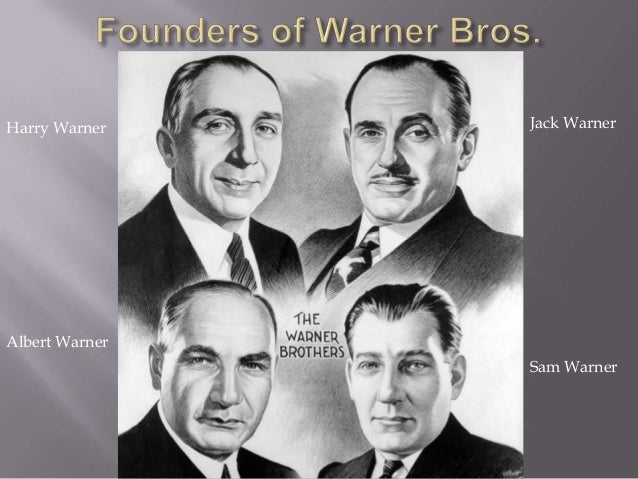
Warner Brothers was incorporated in 1923 by the four brothers – Harry, Albert, Sam and Jack. They bought a lot on Sunset Boulevard and their first big star was a German shepherd named Rin Tin Tin. In fact, it would be fair to say that the studio would almost certainly have gone under during the silent picture era if not for its canine superstar. The brothers got by on multiple bank loans, paying their bills with cash borrowed from bootleggers and other loan sharks at exorbitant interest rates. It was that or close the doors. For years the studio failed to meet its monthly payments and overheads on time.

‘Rinty’ with WAMPAS Baby Star June Marlowe
In 1925 two transmitters were erected on the lot as the brothers invested in radio. The Department of Commerce assigned them a call sign – KFWB – and in that same year Sam Warner purchased a movie sound system called Vitaphone. He had to convince his brothers first, and they were far from impressed with the system which was both cumbersome and complex, so Sam put in part of his own personal fortune to round out the deal. Of course, most movies to that point in time had sound effects and music, but none had audible dialogue. Sam was convinced that dialogue would change the industry for the better. How right he was.

Sam Warner
On 6 October 1927, at their theatre in Times Square, New York City, Warner Bros premiered the first ever movie containing dialogue. It was called The Jazz Singer and starred the irrepressible Al Jolson. The first words ever spoken in a movie were all ad-libbed by him: ‘Wait a minute, wait a minute, you ain’t heard nothin’ yet. Wait a minute, I tell ya, you ain’t heard nothing.’ Not the most brilliant dialogue, but it was history-making and it caused a sensation. Ironically, none of the brothers was present for this landmark moment. The man who had instigated it, Sam Warner, had died from a stroke the day before the premiere and the entire family was at home mourning!
Eugenie Besserer & Al Jolson in The Jazz Singer
The Jazz Singer made an estimated $5 million dollars and put Warner Bros on the map. Within a year 400 theatres were wired for sound, and at considerable expense too. In 1928 Harry Warner purchased the Stanley Theatre Corporation consisting of 250 theatres in seven states! Twelve months later he bought the producer-distributor company, the prestigious First National Pictures, the same company that had signed Charles Chaplin for a staggering $1 million back in 1918. First National was known and respected world-wide, so all Warner Bros pictures for the next three decades always carried ‘A First National Picture’ caption on the screen alongside the studio’s WB. In 1929 Warners pumped out 86 feature films! They were now truly one of the legendary ‘Seven Sisters’. The ‘Seven Sisters’ was the industry name given to the major Hollywood studios – MGM, 20th Century Fox, Columbia, Paramount, Universal, RKO and Warner Bros. In the late fifties RKO would be replaced in the seven by Disney Studios.
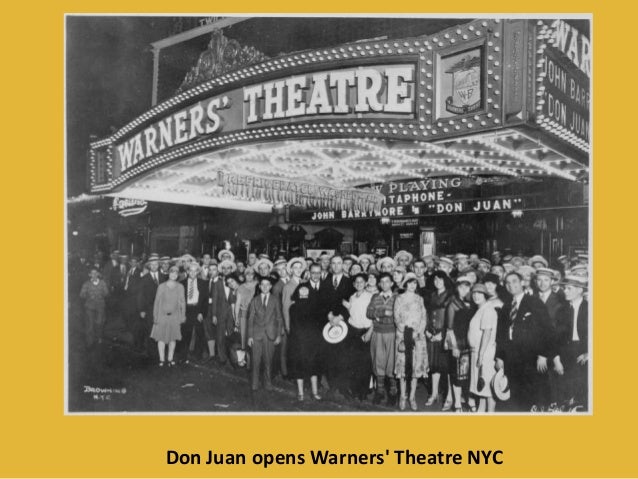
As the 1930s rolled around Warners purchased the Providencia Ranch, a tract of land formerly known as the Universal Ranch. This was an historic piece of real estate. The battle scenes for DW Griffith’s classic The Birth of a Nation were filmed there in 1915. So were outdoor scenes in Jezebel (1938) and Sergeant York (1941). That same place is today the Forest Lawn Memorial Park Cemetery, the final resting place for more major Hollywood stars than anywhere else, attracting over a million visitors annually.

1931 saw the construction of a studio schoolhouse to accommodate the many children employed on the Warners lot. It had an accredited teacher, Mrs. Lois Horne, although students required on the set were privately tutored. Around that time Warners contracted a child actor named Sybil Jason, in a forlorn attempt to compete with Fox’s little dynamo Shirley Temple. In time Sybil would end her acting days supporting Shirley in several features. Despite her virtual anonymity today, Sybil managed to keep her own fan club intact until 2010! She passed away a year later.

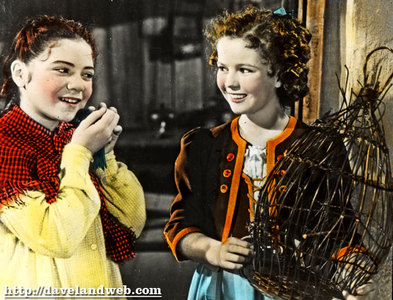
Sybil Jason Sybil & Shirley Temple
Technicolor was introduced in the thirties as well, but it was a complicated process. Not until 1952 when Eastman colour arrived did it become possible for film to be shot in a conventional 35 mm camera. It was soon evident to the studios that renting the cameras was cheaper than buying and maintaining their own. In 1972 the Panniflex Camera came along and today Panavision is the industry standard for filmmakers, even those shooting digitally. Panavision have always insisted on owning their cameras and accessories outright, so camera departments at studios are now a thing of the past.
During World War Two a story circulated that told how Jack Warner took an unprecedented step to protect his sound stages from the possibility of them being bombed by the Japanese. Because Warners was situated close to the Lockheed aircraft factory, Jack became concerned that he might be bombed by mistake should the enemy go after the airplane producers, so he had a huge arrow painted on the roof of his sound stages, alongside which was the word ‘Lockheed’ painted in equally large letters, directing any attackers to the correct target. But is it a true story? Initially, I believed it. In fact, I might even have written about it in one of my books. But on second thoughts it doesn’t hold water. Would the government, or the military in time of war, permit someone to deliberately target an important facility? Would Warner be rash enough to risk a prison sentence for doing such a thing? I think not. It is a charming story but almost certainly a tall tale.

Warner Bros Studios
It was certainly true, however, that Jack was commissioned as a Lieutenant-Colonel in July 1942 and placed in charge of the First Motion Picture Unit (FMPU) by the USAAF. His uniform, complete with medals and ribbons, was drawn from his own Costume Department at Warners. His job was to use Hollywood personnel to make training and propaganda films (about 400 in all), but above all to entice 100,000 Americans to become pilots. And this he achieved without leaving the States. By October he was allowed to return to running Warner Bros studio and Lt. Colonel Paul Mantz replaced him as head of FMPU. In 1965 Mantz would tragically die in a flying accident while making the Jimmy Stewart action- adventure, The Fight of the Phoenix. Warner became accustomed to being saluted and addressed as ‘Colonel’, so much so that he retained that title for the rest of his life.
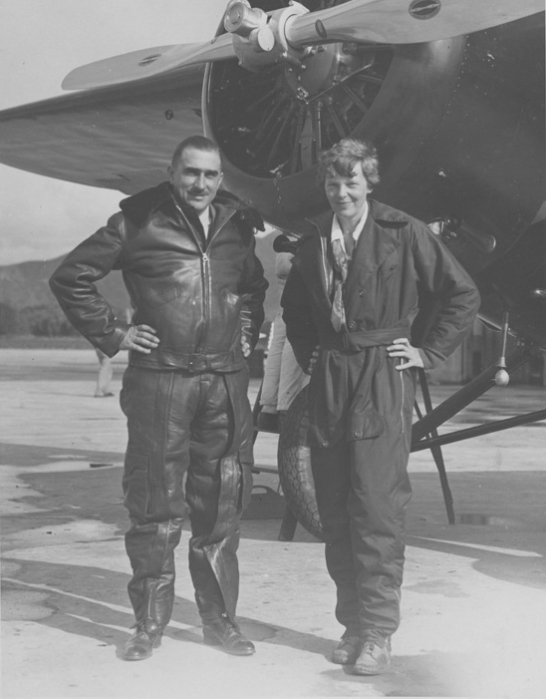
Paul Mantz with Amelia Earhart – mid 30s
Speaking of the Warner Bros Costume Department, it was really something. Most of it was underground, consisting of a staggering eight miles of racked clothing, not to mention 50,000 pieces of jewellery, 30,000 pairs of shoes, 10,000 hats, and 8,000 purses and handbags stacked along its shelves. The studio’s on-site film vault was equally impressive. It contained 6,000 features, 65,000 television episodes and 20,000 shorts. Colour prints are stored at 35 degrees Fahrenheit, black and whites at 45 degrees. There are digital back-ups in locations around the world, including those in a salt mine 650 feet below the surface in Kansas, presumably there for safe-keeping in the event of a nuclear war.
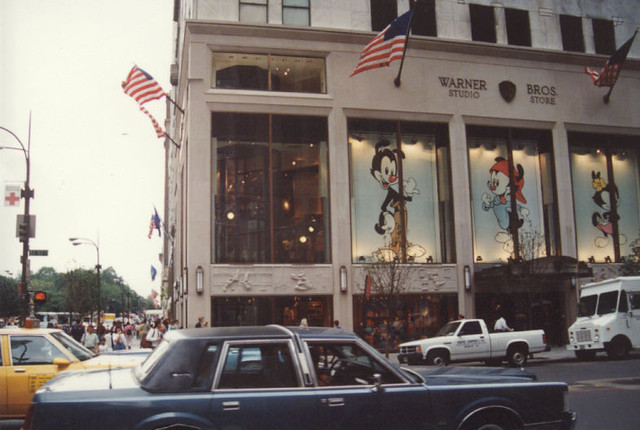
Warner Bros Studio Store in New York City
The Studio Store sprang up next to the Commissary and sells souvenirs and t-shirts after eventually moving to the Tour Department Office at Gate 4 on the Warners lot, then finally settling at the Costume Building in 2004. It was renamed ‘Central Perk’ after the coffee shop in Friends (1991-2001). Of course, there are now WB Studio Stores all around the globe.

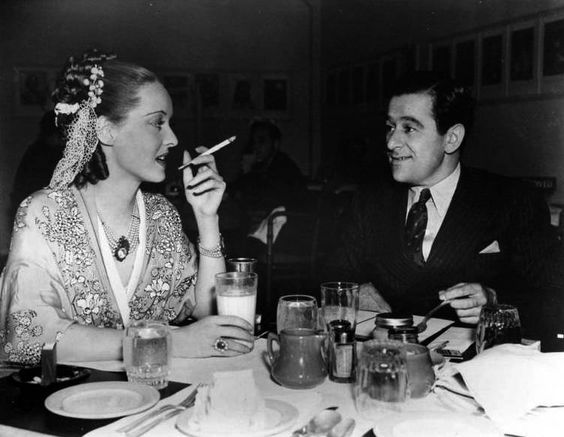
The Commissary Fine Dining Room Bette Davis & William Wyler dining
at the Commissary in the 30s
The nearby Commissary, ‘where the stars eat’, began life in 1925. It burnt down four months later, but was quickly rebuilt. In 1930 it was enlarged to hold 350 patrons, and six years later grew even bigger accommodating 550. In the 1940s it was officially renamed ‘The Green Room’, and later still ‘The Blue Room’. Today, it includes an outside dining plaza and seats about 1,100! It has always catered for those working on sets or away on location. It even supplies brown-bag lunches and dinners for office staff and others working late hours. And it caters for the Executive Dining Room in the Administrative Complex as well as the Fine Dining Room.

Julius & Philip Epstein
The first great writer at Warner Bros was none other than Darryl F. Zanuck, the man who would one day head 20th Century Fox. Using at least three pseudonyms, he penned most of WB’s early scripts. Julius and Philip Epstein were two more brilliant writers at the studio. They were also identical twins. For years they fooled Jack Warner (and everyone else) by clocking on for each other and assuming each other’s identity. Seldom were both brothers in the Writers Building at the same time but they were paid as if they were.

The 1945 Battle of Warner Bros
In 1945 the studio’s much-publicized motto was: ‘Combining good citizenship with good picture making’. But that thought had its limitations. Striking workers during a 1945 labour dispute rioted near Stage 22, turning over cars and battling with police who used tear gas and fire hoses on them. Over eighty people were injured. Unbeknown to the public, Jack Warner secretly installed snipers on the roof of Stage 22 with orders to shoot if the situation got out of hand. Writer Julius Epstein was working in the nearby Writers Building and spotted the gunmen positioned across the way. ‘That’s Warner Bros’, he wisecracked, ‘combining good citizenship with good marksmanship.’
In 1948 the United States Supreme Court dealt the ‘Seven Sisters’ a mortal blow when it ruled that any studio having control of production, distribution and exhibition of movies was guilty of monopolizing the industry. All seven were compelled to sell off their theatres and they never really recovered from it, although the smallest of the majors, Universal and Columbia, were not as severely affected because they owned scarcely any screens. Warners, however, owned around 400 by then. Selling them off resulted in the studio’s assets in land holdings plummeting in 1952 from $87 million to just $11 million.
By the mid-fifties the studio’s employee base (stars included) had aged considerably. The 1955 death of its youngest super-star James Dean was a major setback and, coupled with the advent of television, saw movie attendances drop alarmingly. RKO virtually ceased to exist in 1957; most of 20th Century Fox’s lot was bulldozed in the early sixties to make way for Century City, a shopping and business complex; MGM’s fabled backlot was sold and demolished; Columbia’s Sunset Boulevard lot was sold off; Universal transformed theirs into a theme park; Paramount was gobbled up by Gulf & Western in 1966, and only Warner Bros went on as before. Or almost. Feudal Hollywood had been replaced by corporate industry that still operates today.
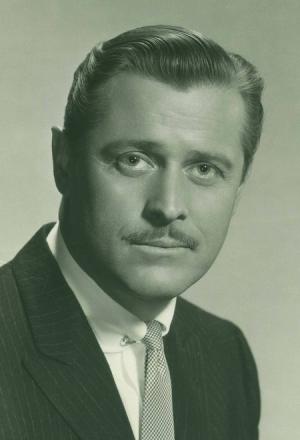
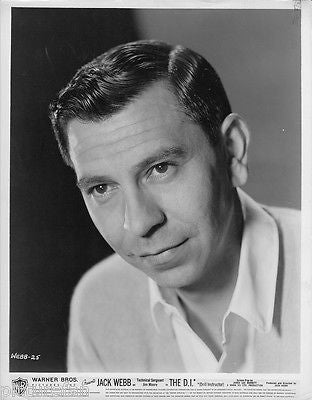
William T. Orr Jack Webb
1955 also saw the birth of Warner Bros Television. Jack’s son-in-law William T. Orr was named the first president. Jack Webb, the star of the Dragnet series, succeeded him. The studio’s Cartoon Division had started way back in 1930, its purpose being to provide ‘fillers’ for the programs sold to theatre-owners. The first Warner Bros cartoon character was Porky Pig. He appeared in a 1935 cartoon titled ‘I Haven’t Got a Hat’. Daffy Duck came along in 1937, then Elmer Fudd and Bugs Bunny in 1940. The division closed down in 1962 with the decline of the featured short. Warners had a backlog of unreleased cartoons. Then, in 1964, United Artists used animation in its opening credits for The Pink Panther and animation found a brief new lease on life. Warners’ Animation Building reopened briefly in 1967, but closed down a second time two years later.

The rebirth of the animated cartoon
Studio Tours were conducted right from the early days of the studio, but only for friends of executives, celebrities, royalty, presidents, sport stars, contest winners and so on. The regular cinema-goer was rarely invited onto the lot. Not until about 1973 anyway. The Universal Tour had begun in 1964, complete with staged material for spectators’ amusement, and it was a lucrative sideline. Warners’ tours were conducted by the mail-room employees, mainly because they knew which stages were being used and by whom. They also knew where everything was. Executives generally had little idea about things like that. The standard tour fee at first was just $3 and was a very tiring, dusty walk. In time the studio acquired a couple of 12-seater golf carts which made the excursion more comfortable. The VIP Tour today is one of the studio’s most lucrative departments.

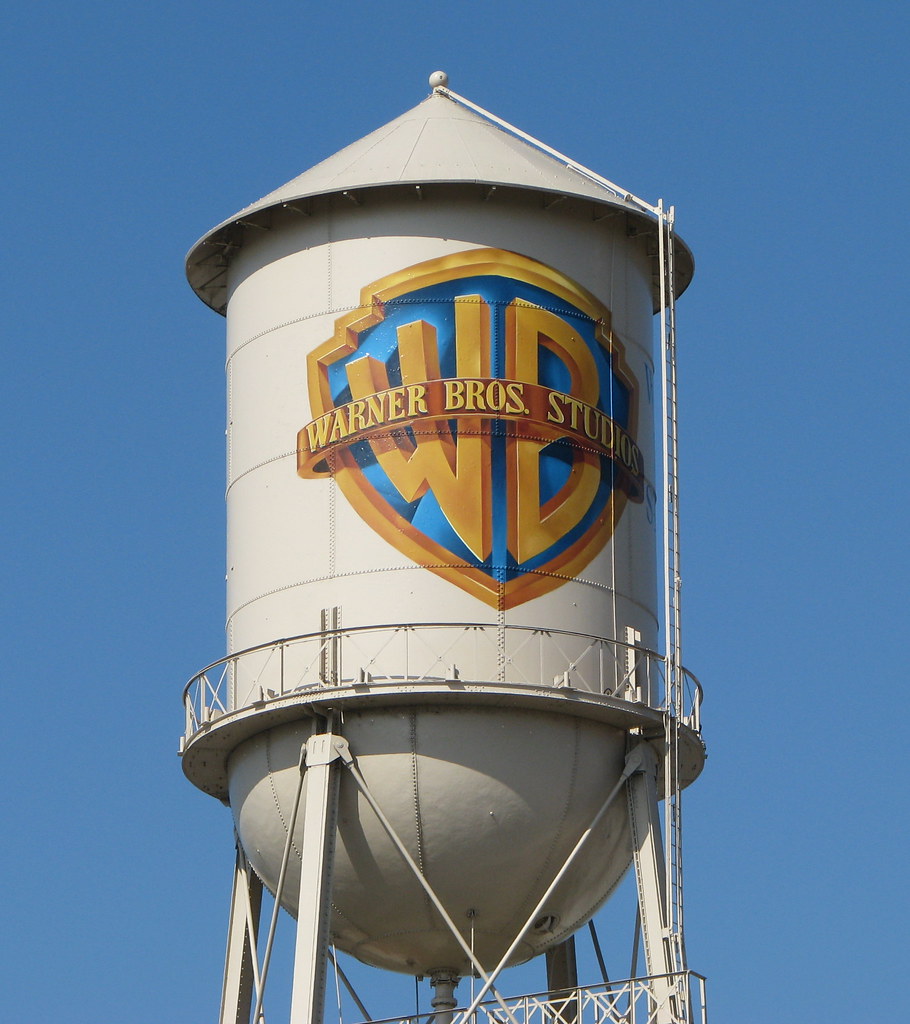
A Warner Bros tour cart in operation The iconic water tower
The Warner Bros water tower, emblazoned with the letters ‘WB’, is an iconic landmark in Hollywood. Jack Warner liked to end an argument by pointing at it through his office window and saying, ‘Whose name is on the water tower?’ When he tried the same ploy on Warren Beatty during the production of Bonnie & Clyde in 1967, the quick-witted actor promptly pointed out, ‘Actually, those are my initials – JL.’ Jack became the last surviving brother when Albert passed away in Miami Beach, Florida in November 1967. Four months earlier, in July, Jack spent his last working day at the studio, having sold his share of the company to Seven Arts for $32 million. Eerily, his final day at Warners coincided with the arrival of a 22 year-old film student from the University of Southern California, a young man about to start a paid internship as winner of the Sam Warner Scholarship. His name was George Lucas. As ‘Old Hollywood’ drove out of the gates, ‘New Hollywood’ drove in.

Jack Webb Replaced William T.Orr In 1960,William T.Orr Left Warner Bros And Joined Paul Monash As Well As Walter Grauman.Forming MOG Productions In 1960.Their First Series Co-Produced With MGM Television Is Cain’s Hundred,Then In 1964 Paul Monash,William T.Orr And Walter Grauman’s MOG Productions Partnered With 20th Century-Fox Television Division Headed By William Self With The Success Of Peyton Place,The First Nighttime Soap Opera Followed By The Legend Of Jesse James,Blue Light,The Felony Squad,Judd For The Defense,Lancer,Bracken’s World,Custer,Arnie,Cade’s County,The Ghost And Mrs.Muir,Nanny And The Professor,Jack Webb Was Fired After Three And A Half Years With Warner Bros,Was Replaced Permanently By His Old Friend William Conrad,William Conrad Produced And Director As Well As Executive Producer Of Warner Bros Movies.
Most informative. Thank you.
William Orr did not set up a production company with Monash and Grauman and make TV shows with them. After WB, he made the movie “Wicked, Wicked” for MGM with writer-director Richard Bare. He developed projects after that, but only one “Won Ton Ton: The Dog That Saved” made it to the screen. He co-wrote the original script with Cy Howard, but after changes by others he was uncredited.
“Rinty” is the best looking of the lot, sitting on his actor’s chair; looking at Jane Marlowe.
About the Epstein twins later. They were a riot!!
I’m tired, good night.